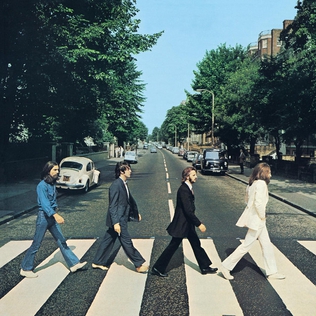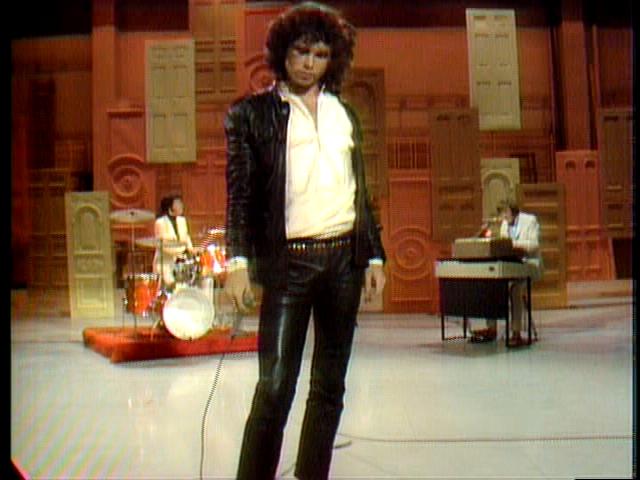I'll try to keep this as short as possible. The Final Four. Just, wow...three number one seeds and a four seed. A little strange, but then again this bracket has been full of surprises. I have posted Five Defining Moments for each artist so you can reflect on some of the most significant achievements and moments of their career. There will be two polls of these matchups posted through the blog's Facebook page, which you may or may not know we have. I would link to more music of each artist, but I've shown you enough. Be proactive!
The Beatles

Five Defining Moments:
February 11th, 1963 - A new signee to Parlophone, the Beatles recorded ten songs at Abbey Road (then named EMI) studios in a marathon, three-part session with George Martin. These recordings, along with four songs previously released on two singles, were rush released as the band's first album "Please Please Me" a month later. The album hit #1 and stayed there for 30 weeks, kicking off "Beatlemania".
February 9th, 1964 - Wildly successful in the U.K. and just becoming a phenomenon in the U.S., the Beatles traveled overseas to make their U.S. television debut on The Ed Sullivan Show. The telecast drew an audience of about 73 million viewers, a whopping 34 percent of the American population. The broadcast became a landmark event in U.S. television history and cemented the band's status as superstars.
August 29th, 1966 - The Beatles wrap up a 14-date U.S. tour at Candlestick Park in San Francisco. Amid controversy over Lennon's "More popular than Jesus" remarks and weariness of touring on the band's part, it would turn out to be the final tour for the Beatles. The band would continue their incredible success for the next three and a half years from behind closed doors.
December 6th, 1966 - Recording began on "Strawberry Fields Forever", kicking off a four month period of work at EMI Studios that resulted in both the groundbreaking album "Sgt. Pepper's Lonely Hearts Club Band" and the double EP "Magical Mystery Tour". This venture into Psychedelia is heralded as some of the most influential recordings in music history and elevated the band's already legendary status.
August 8th, 1969 - Photographer Iain Macmillan took the now-famous shot of the Beatles walking across Abbey Road outside of their studio for their upcoming album of the same name. While the photo is legendary in itself, the album was the band's swansong, recorded last even though "Let It Be" was the last released. By mid-1970, the Beatles had disbanded due to significant turmoil between the band members.
Vs.
The Doors

Five Defining Moments:
August 18th, 1966 - Elektra Records president Jac Holzman and future Doors producer Paul A. Rothchild see two sets of the Doors playing famous L.A. venue Whisky a Go Go, then promptly sign the band on their label. The band would soon be fired from their steady gig, but would begin recording their self-titled debut album almost immediately. So the heyday of the Doors began.
July 29th, 1967 - A three minute radio edit of the seven minute album centerpiece "Light My Fire" reached #1 on the Billboard Hot 100 for the first of its three weeks on top. The song was a commercial breakthrough for the Doors and is widely praised as their best critically. The band would ride the song's success all the way to Ed Sullivan on September 17th and national stardom.
December 9th, 1967 - Before a concert in New Haven, Connecticut, Jim Morrison and a (female) fan were making out backstage when a police officer noticed and told them to beat it. When Morrison flatly refused, the cop maced him. In the middle of the concert, Morrison let loose on a profanity-filled tirade about what happened and the ineptitude of the officer. He was arrested on stage, and though the charges of rioting and indecency were later dropped, it was the first time that had occurred during a performance.
December 1970-January 1971 - Though longtime producer Rothchild quit over the making of this album, "L.A. Woman" was quickly recorded and became a resounding success in 1971. With two top 20 hits ("Love Her Madly" and "Riders on the Storm") and a bestselling album, it appeared that the Doors had regained their roots and were on the upswing again.
July 3rd, 1971 - At the age of 27, Jim Morrison dies of heart failure (though the cause is disputed) in Paris, where he had moved a few months earlier. Robbie Krieger, Ray Manzarek and John Densmore would record two more albums, but the band disbanded in 1973 as a shell of its former self. Still, it's clear that the Doors were an incredible, successful and unique band who helped define the 60's.
David Bowie

Five Defining Moments:
July 11th, 1969 - Ten days before the actual Apollo 11 moon landing, Bowie released this single and had found his breakthrough hit. Despite a long and breathtaking career, the song remains one of Bowie's best. The spacey, psychedelic rock would eventually be supplanted as the 70's, Bowie's signature decade, started.
February 10th, 1972 - Now armed with the backing band Spiders From Mars, Bowie debuted his Ziggy Stardust persona that took the U.K. by storm. Androgynous and glamorous, Ziggy Stardust challenged preconceptions of what rock music could be and helped to popularize Glam Rock as a whole. The album to accompany the persona was a smash U.K. hit and is widely regarded as one of the greatest albums ever.
January 23rd, 1976 - "Station to Station", Bowie's tenth album, is released to critical and commercial success, becoming his best seller in the U.S. The album debuted the Thin White Duke, another Bowie character that hid a terrifying reality: Bowie's cocaine addiction. He was withering away and hardly remembers the production of the album, but its unique blend of funk and Krautrock stands the test of time.
March 29th-December 12th, 1978 - Though Bowie's success never stalled, his drug habit threatened to consume him. Luckily, he managed to break his cocaine addiction by 1978 and went on the Isolar II World Tour triumphantly. The tour highlighted music from the first two albums ("Low" and "Heroes") of the Berlin trilogy, named after Bowie's move to Berlin following "Station to Station". It showed that Bowie could now be just as healthy as his music career, which was still going strong.
March 17th, 1983 - The single "Let's Dance", from the album of the same name, is released. The song became a worldwide #1 hit, introducing Bowie to a new legion of fans without alienating his old ones. With help from Chic member Neil Rodgers and Stevie Ray Vaughn, Bowie reached his commercial zenith. He couldn't figure out how to cater to this new audience, but the fact that Bowie had reached this peak is an incredible achievement in itself.
Vs.
Bob Dylan

Five Defining Moments:
August 1962 - A veteran of the Greenwich Village folk scene and a commercial flop after his debut album with Columbia Records, Robert Zimmerman remained steadfast. He legally changed his name to Bob Dylan (a name he'd used to perform for some time), and agreed to a contract with manager Albert Grossman, who was known for being fiercely loyal to his clients. The two legal moves allowed Dylan to regroup, and in 1963 he started to get a lot more attention.
July 20th-25th, 1965 - This five day period in the Summer of '65 drew equal amounts of praise and criticism. The single "Like a Rolling Stone" was released on the 20th, then the folk leader Dylan played a short electric set at the Newport Folk Festival five days later. The song was a critical high point for Dylan, but his Newport appearance drew harsh criticism as the folk community at that time felt deeply betrayed. Both events are now rooted in pop culture.
January 17th, 1975 - After eight years of hit or miss albums and no touring, the album "Blood on the Tracks" is released on this date, now considered as the only album to match his trilogy of 60's classics ("Bringing It All Back Home", "Highway 61 Revisited" and "Blonde on Blonde"). The album was inspired by serious personal turmoil, especially the divorce from his wife Sara. Though he spent most of a decade out of the public eye, "Blood on the Tracks" returned him to prominence in a big way.
August 20th, 1979 - Again suffering through a critical slump, Dylan suddenly became a Born-again Christian after a life-changing religious experience on tour in late 1978. Inspired, he released the evangelist "Slow Train Coming" on this date. Though Christian Rock Dylan is not considered essential, it showed that he was as resilient and determined as any artist out there. Several more "resurgence" albums would pop up over the next few decades, including "Oh Mercy" in 1989 and "Time Out of Mind" in 1997.
June 7th, 1988 - This date marked the beginning of the "Never Ending" tour, a live performance odyssey that exceeds two thousand shows and continues to this day. About 6-7 months of each year for the last 24 years--album to promote or not--has been devoted to a worldwide Bob Dylan tour, hence the "Never Ending" moniker. If you thought that Dylan would sit on his laurels while growing old, you thought wrong. This tour is the ultimate testament to Dylan's resilience as well as his lasting impact.
No comments:
Post a Comment